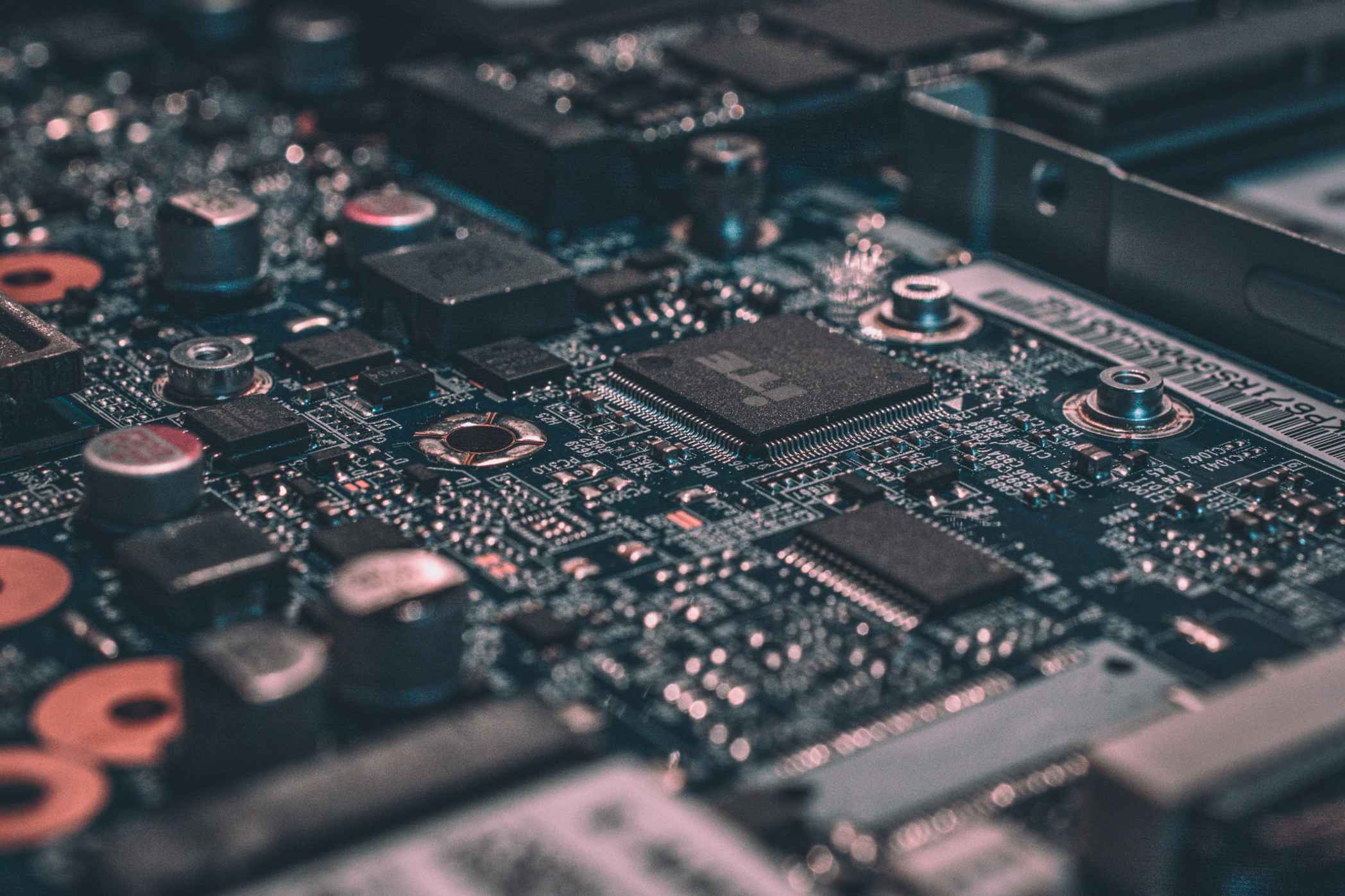The Blockchain Developer Roadmap for 2025
Your complete roadmap to becoming a blockchain developer in 2025. This guide covers the essential skills, languages, tools, and projects you need to build a successful career in Web3 engineering.

Becoming a blockchain developer is one of the most exciting and lucrative career paths in technology today. As the world transitions towards a more decentralized internet, the demand for engineers who can build secure and efficient decentralized applications (dApps) has skyrocketed. But for newcomers, the path can seem daunting. What languages do you need to learn? What tools are essential? And what kind of projects should you build to prove your skills?
This comprehensive guide provides a step-by-step roadmap for aspiring blockchain developers in 2025. We'll take you from absolute beginner to job-ready, covering the foundational knowledge, the core tech stack, and a practical project-based learning path. This isn't just about learning to code; it's about learning to think like a Web3 builder.
Step 1: Master the Fundamentals (Don't Skip This!)
Before you write a single line of code, you must understand the environment you're building for. Rushing this step is a common mistake that leads to building insecure or inefficient applications. This foundational knowledge is what separates a code monkey from a true engineer.
1.1. Core Blockchain Concepts:
- Decentralization: Truly understand why building on a decentralized network is different from a centralized server. Grasp the concepts of censorship resistance and permissionless innovation.
- Immutability: Internalize the fact that deployed code cannot be changed. This will shape your entire approach to security and testing.
- Consensus Mechanisms: Know the difference between Proof of Work (PoW) and Proof of Stake (PoS). Understand what a "51% attack" is.
- Start here: What is a Blockchain?
1.2. Public Key Cryptography:
- Public/Private Keys: Learn how they are generated and used to create a "wallet." Understand that the private key is the ultimate source of ownership.
- Digital Signatures: Understand how a private key is used to sign a transaction, proving ownership without revealing the key itself.
1.3. Ethereum & the EVM:
- How Ethereum Works: Study the architecture of the Ethereum blockchain. Understand the roles of nodes, the mempool, and block construction.
- The EVM (Ethereum Virtual Machine): This is the global computer your code will run on. Learn about its core components: the stack, memory, and storage. A deep understanding of the EVM is a major differentiator for senior roles.
- Gas: Every operation on the EVM costs gas. Learn what it is, why it's necessary, and what makes certain operations more expensive than others. Read our guide to gas fees.
Step 2: Learn the Core Programming Languages
Your choice of language will depend on what you want to build, but for most dApp developers, the path starts with Solidity and JavaScript.
- Solidity: This is the most popular language for writing smart contracts on Ethereum and other EVM-compatible chains. Its syntax will feel familiar to developers with a C++ or JavaScript background. This should be your top priority.
- JavaScript/TypeScript: Essential for building the frontend of your dApps. You'll use it with libraries like Ethers.js or Viem to interact with your smart contracts from a web browser.
- Rust (Advanced): If you're interested in building the core blockchain infrastructure itself (Layer 1s or L2s), or developing on high-performance chains like Solana, Rust is the language of choice. It has a steep learning curve but opens up elite-level opportunities.
Learn more about which language to choose in our breakdown of the top 5 Web3 languages.
Step 3: Get Familiar with the Developer Toolkit
You'll need a specialized set of tools to write, test, and deploy your smart contracts efficiently.
- Development Environment:
- Foundry (Recommended): A faster, more modern toolkit that allows you to write your tests directly in Solidity. It's quickly becoming the industry standard for serious developers. Learn more in our introduction to Foundry.
- Hardhat (Good to Know): A flexible and popular JavaScript-based environment. Many existing projects still use it, so familiarity is valuable.
- Wallet: MetaMask is the standard browser-based wallet you'll use for development and testing. Learn how to use it with test networks like Sepolia.
- Smart Contract Libraries: OpenZeppelin Contracts is the gold standard for secure, reusable smart contract components. Never write a standard ERC-20 or ERC-721 token from scratch; always use an audited library.
- Indexing Protocol: The Graph is the standard way to query data from the blockchain efficiently. You'll use it to build APIs for your dApp's frontend.
Step 4: A Project-Based Learning Roadmap
The best way to learn is by building. Follow this project progression to build your skills and your portfolio. Your GitHub is your resume.
-
Project 1: Simple Storage Contract
- Goal: Learn the basics of Solidity syntax.
- Task: Write a contract that allows you to store a number and retrieve it. Deploy it on a testnet using Remix IDE or Foundry.
-
Project 2: Your Own ERC-20 Token
- Goal: Understand token standards.
- Task: Write and deploy your own simple cryptocurrency using the OpenZeppelin ERC20 standard. Build a basic React frontend using Viem that allows users to connect their wallet and see their balance of your token.
-
Project 3: An NFT Collection
- Goal: Learn the ERC-721 standard.
- Task: Create a simple generative art NFT collection. Write a contract that allows users to mint one of your NFTs. Display the minted NFTs on your frontend. Host your metadata on IPFS.
-
Project 4: A Decentralized Staking dApp
- Goal: Understand basic DeFi mechanics.
- Task: Build a contract where users can deposit the ERC-20 token you created in Project 2. The contract should reward them with more tokens over time. This is a foundational DeFi primitive and an excellent portfolio piece.
-
Project 5: Contribute to an Open-Source Project
- Goal: Get real-world experience and build your reputation.
- Task: Find a Web3 project on GitHub. Start by fixing a small bug, improving documentation, or adding a missing test case. This is one of the most powerful signals you can send to potential employers.
Step 5: Specialize and Go Deep
Once you have the fundamentals down, it's time to specialize to increase your value.
- Security: Go deep on smart contract security. Complete the Ethernaut and Damn Vulnerable DeFi challenges. Participate in Code4rena audit contests.
- DeFi: Deconstruct the architecture of major protocols like Uniswap V2 or Aave. Build your own simplified versions.
- Scalability: Learn how to deploy and build on Layer 2 networks like Arbitrum or Optimism.
The journey to becoming a blockchain developer is a marathon, not a sprint. It requires continuous learning and a genuine passion for the technology. By following this roadmap and consistently building in public, you'll acquire the skills and portfolio needed to land a high-impact role in this revolutionary industry.
Ready to find your first developer role? Check out the latest openings on our Web3 Job Board.
Frequently Asked Questions
1. What's the best programming language to learn for blockchain development?
For application development on Ethereum and EVM-compatible chains, Solidity is the essential language. For building the core blockchain protocols themselves, Rust is increasingly the standard. Our guide on the top 5 Web3 languages can help you decide.
2. How long does it take to become a blockchain developer?
For an experienced Web2 developer, a focused transition can take 3-6 months to become job-ready. For a complete beginner, a more realistic timeline is 12-18 months of consistent learning and building.
3. Do I need a computer science degree?
No, a formal degree is not a requirement. A strong portfolio of projects on GitHub that demonstrates your skills is far more important to Web3 recruiters than your educational background.
4. What are the most important skills for a blockchain developer?
The most critical skills are smart contract security, a deep understanding of the EVM, and the ability to write gas-efficient code. For a full breakdown, see our guide on the top 10 essential skills.
5. How do I build a portfolio if I have no experience?
The best way is through project-based learning. Follow our roadmap: build a simple token, then an NFT, then a staking dApp. Each project builds on the last and demonstrates a new skill. You can find more ideas in our guide to building a Web3 portfolio.



